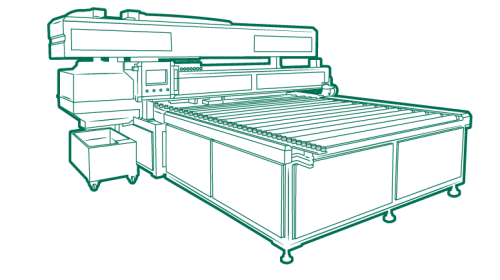
Five Tips for a Safer Work Environment
Easy-to-implement ideas to boost manufacturing plant safety
- Create policies, not only for where employees can walk, but how they move through the plant floor. For example, require workers and visitors to exercise the same rules as crossing a road—stop at an aisle intersection and look both ways down an aisle, before proceeding with caution.
- Create a cellphone policy that limits use and potential distraction. Some companies allow employees to have the phone on the floor, but kept in the pocket. Others only allow workers to look at cellphones during break time.
- Consider cross-training employees on various pieces of equipment. Cross-training can add variety to tasks and make people less distracted on the job.
- Employees may want to take off PPE or wear it improperly because manufacturing plants can get so hot. Offer more breaks and set up stations with water, Gatorade and popsicles on hot days to help employees cool down.
- Make PPE easily accessible. A PPE vending machine, for example, allows employees to check out safety equipment without having to take the time to leave the floor or request it from a supervisor.
Common Safety Snafus
Curb the following behaviors before they become habit
- Fixing jams with sticks or pokers
- Disarming alarms
- Using duct tape as a quick fix
- Workers removing gloves when they become hot or uncomfortable
- Employees rolling up wrist guards like they are shirt sleeves
- Employees neglecting to wear protective eyewear over prescription glasses
- Refusing to wear PPE for religious or ethical reasons, for example, refusal to use cow- or pig-skinned gloves, or to wear hard hats due to religious head coverings
- Refusing to wear PPE for health reasons, such as allergic reactions or chaffing due to the PPE material
Machinery and tools are a big part of a streamlined factory. For the residential window and door industry, machinery can be an asset for employee safety by completing tasks that are arduous or repetitive, as long as machines are used correctly and maintained well.
Automation, in particular, has implications for worker safety. Joe Erb, commercial sales specialist, Quanex Building Products, argues that machinery can increase worker safety in situations where employees come into contact with sharp glass edges. “Much has been made about how automation in these areas can help manufacturers boost quality, throughput and consistency, but the safety benefits should be just as attractive,” says Erb.
Employers should also consider how to use ergonomic design to streamline production flow. Ergonomic design considers the global and local processes on the plant floor; it ensures that machinery and equipment work together, while also making sure that individual equipment and tools are easy for employees to use. “Investing in ergonomic equipment increases company productivity by reducing the physical effort that our associates must put forth in performing their jobs,” says Brian Stratton, safety manager for Linetec. “Ergonomic machinery reduces injuries, injury expenses and lost time at work.”
All of this is contingent on machines and tools being used correctly, and with proper maintenance. Some of the risky workarounds involve machinery that is being used or maintained improperly, says Mike Burk, North American technical representative, Sparklike. “If you are having to use machinery incorrectly, or it’s not working the way it’s supposed to, call maintenance,” he says. “You can’t take the risk.”
Burk also underlines the imperative of knowing and following lockout/tagout procedures for automated equipment. Assembly lines with automated equipment can pose risks, he says, since one employee cannot always be in visual or verbal communication with his or her partner at the end of the line.
Employees monitoring or using equipment must lockout/tagout correctly. Lockout/tagout for tilt tables are also vital, says Burk. Leaving tilt tables in the upright position, without following lockout/tagout procedures can allow material to fall on the worker.
Personal protective equipment
Personal protective equipment, known as PPE, is required for all employees who work on the window and door manufacturing facility floor. Different equipment is required for different tasks and is worn to reduce the risk of injury for those who work with or around potentially harmful substances. PPE is the last line of defense against injury.
Cut-resistant PPE is critical, particularly in the areas of the body where major arteries would render a cut most harmful. These areas include the neck, upper under arm, upper inside leg and wrist. And, as Burk highlights, there is also a need for appropriate footwear. He points to the many trip-hazards that exist on the manufacturing floor. “People may come to work with shoes that have no traction, and they can fall in water and oil,” he says. “Shoes need to have tread. People may not think about that at all.”
His concern is backed by Bureau of Labor Statistics data, which shows a continued upward trend in fatal work injuries due to falls, slips and/or trips. The number of fatalities across industries increased 25 percent from 2011 to 2016.
Most companies have minimum PPE requirements for all personnel in a factory, and specific PPE requirements for personnel in certain jobs, based on hazard assessment. Minimum requirements for all work in a shop or factory where annealed glass is manufactured or processed usually includes safety glasses with side shields and safety shoes.
Management must address non-compliance to PPE requirements, first by determining why employees are not using required PPE. Communication and enforcement solves most issues of non-compliance. Many other instances can be resolved with a change in PPE type or material. For noncompliance due to religious concerns, OSHA offers some guidelines, including for potential exemptions and cost liability for providing PPE alternatives. Visit osha.gov for materials on religious exemptions.



